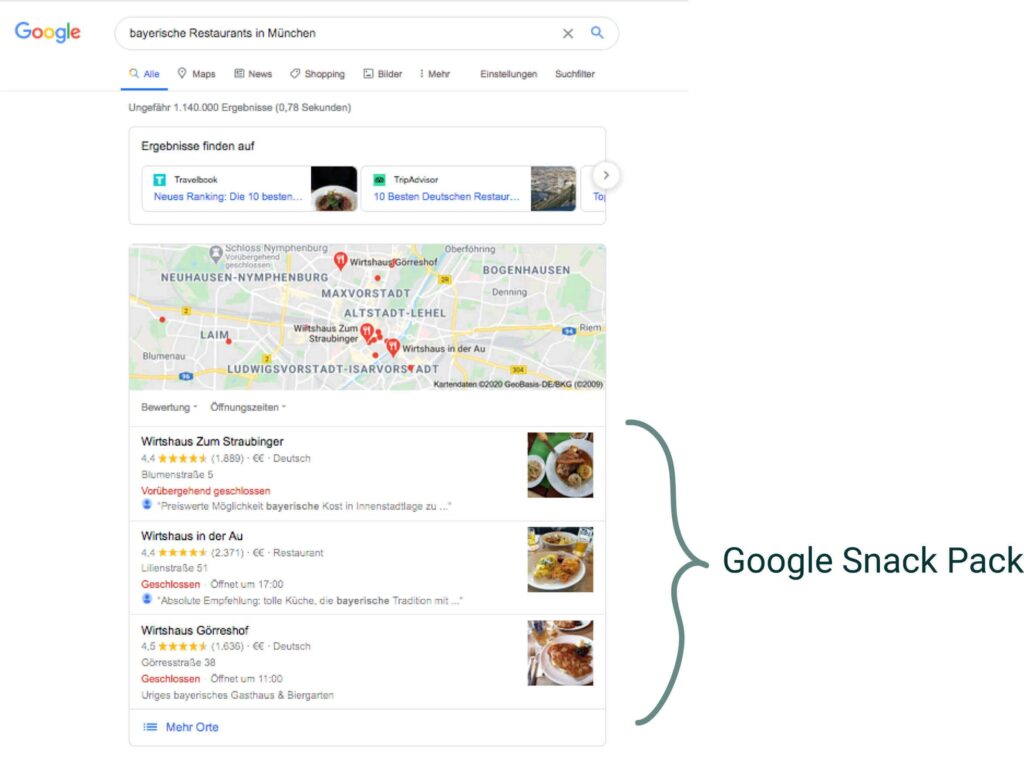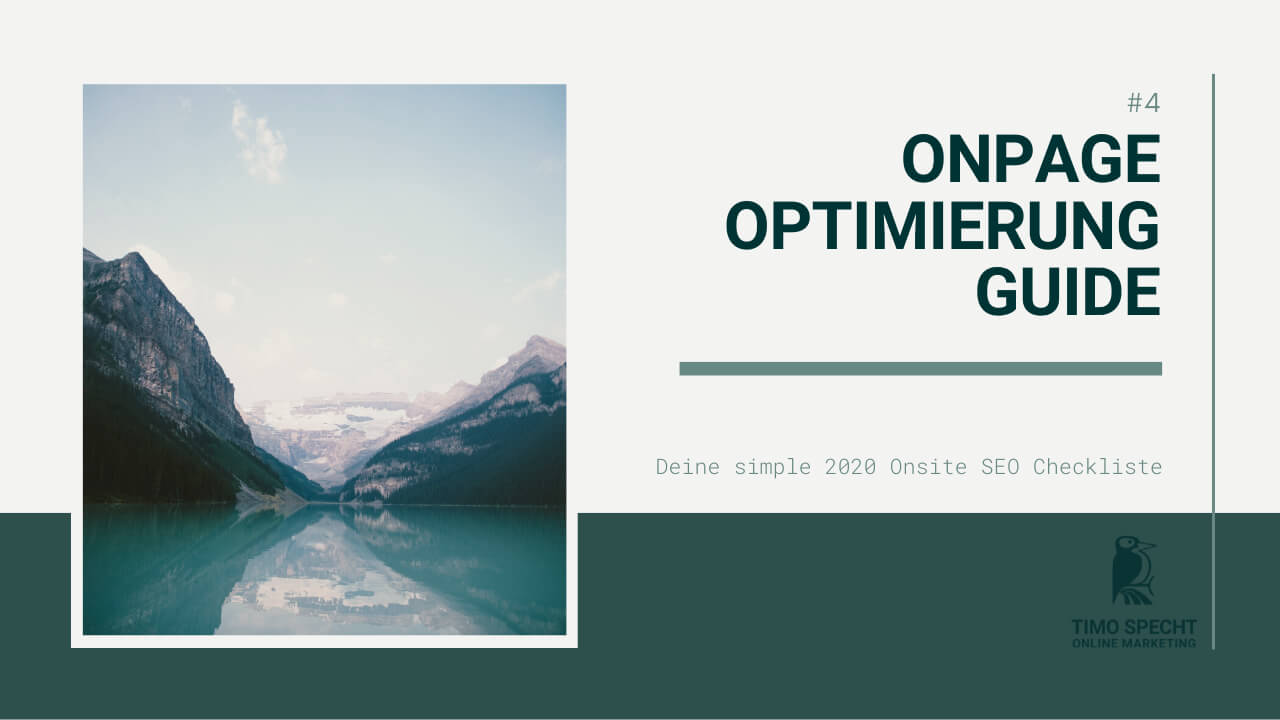
You will learn the following points in the Onpage Guide
- What on-page optimization is
- How to optimize your content
- How you can design an SEO-friendlyURL
- How you can design your headlines and descriptions
and you will receive step-by-step instructions so that you can start optimizing your on-page SEO immediately.
-
Free
SEO strategy meeting
In a free SEO strategy consultation, we uncover untapped potential and develop a strategy to make you more successful on Google.

- More organic visibility
- More organic visitors to your website
- More inquiries & sales
What is on-page SEO optimization?
First of all, it is important to explain on-page SEO optimization. Onpage SEO optimization refers to the two branches of search engine optimization. This includes onpage and OFFPAGE optimization. These branches are also known as ONSITE and OFFSITE optimization.
All content adjustments to your own website are carried out through on-page SEO optimization. The optimization includes the improvement measures that everyone can apply to their own website. The methods for improving ONPAGE SEO deal with content, structure and technology. This means that it is particularly relevant to design the content and structure qualitatively, individually and thematically - especially in terms of formatting, headings, etc.
The technique of on-page optimization concerns the code of the sources on your own website. This refers to SEO-friendly and valid markup. This involves optimizing the respective META elements and attributes of images and titles.
The internal structure of the links is also an essential part of the optimization. The internal link structure can make crawling and indexing of the homepage can be optimized and created using the Google Bot . In the context of SEARCH ENGINE OPTIMIZATION, on-page optimization is dealt with first and foremost, followed by off-page optimization (incoming links from outside).
The 10 steps to successful on-page SEO optimization
Step 1: Content management
You should pay attention to individual and qualitative content, especially when it comes to on-page SEO optimization. Above all, the Panda update even managed to focus on Google's own quality and context. In any case, you should make sure that your website offers added value to the user and does not cater to search engines.
When researching content, you should address the following questions:
- How do you represent yourself against your competition, for example Google rankings?
- How does your offer differ from the competition?
- What information about the most frequently asked questions and problems do I answer on my FAQ?
- What content lands on the top trends on Google?
- Do you have expressive diagrams?
- Do you have any known clients or references that you can list on your site?
- What added value is offered to the user?
Before you design your site, you should first consider which offers can impress your users. It is important that you stand out from your competitors and offer unique added value and stand out positively. After all, apart from improving search engines, on-page SEO also means convincing users with your content. Ideally, the user should be enthusiastic about your content and even recommend it to others.
The most important thing in on-page SEO optimization is to optimize the content. You can set several keywords and structure them ideally. If your content is poor, you have no chance of ranking well in the long term. Therefore, make your content meaningful and don't just focus on the search engine.
Step 2: WFF*IDF text check
You should pay attention to individual and qualitative content, especially when it comes to on-page SEO optimization. Above all, the Panda update even managed to focus on Google's own quality and context. In any case, you should make sure that your website offers added value to the user and does not cater to search engines.
WDF*IDF TEXT ANALYSIS plays a major role in content and keyword research. The research gives you details about the other terms on the top-ranking competitors in addition to their keywords that are used and how often they are used in the content:
Based on the analysis, you can get an explicit picture of how you can design the structure and layout of your website.
Step 3: URL structure and design
The structure and layout of the website are particularly relevant for the Google ranking. The main focus should be on formatting, highlighting and keyword ranking.
Therefore, pay attention to flat URL hierarchies, such as in this basic template:www.domain.de/fokuskeyword
--> HTTPS://WWW.TIMOSPECHT.DE/ONPAGE-OPTIMIZATION
Step 4: Domain design (www)
When you start with onpage SEO OPTIMIZATION, you should start with the right domain name. If you manage to include the right focus keyword in the domain name, it will have a positive effect on your Google ranking. You should also use this keyword afterwards in the headline of your website, in the meta mentions and in the text of the respective HTML pages.
For this reason, it is important for companies to think carefully about the company name and the domain. The domain must stand out from other domains. This means that your own offer can be found more quickly.
Important: Keyword domains give you a ranking advantage, especially in the short term. In the long term, however, your brand will have more credibility. Here you should weigh up whether you should go for short-term ranking advantages with a KEYWORD DOMAIN (EMD = EXACT MATCH DOMAIN) or focus on a brand domain in the long term.
Step 5: Title Tag
The title of your website is placed at the top of the browser. In Google, the titles of the search results appear in blue and are underlined. This makes the search result stand out better. You should include two or three important keywords in the text and place the most important keyword first.
A welcome address is usually included in the title on the homepage. You should definitely avoid meaningless phrases and place your company name or a relevant keyword. This will have a positive influence on the search engines.
- I am one of the leading SEO experts in Germany
I am known from big media such as Stern, GoDaddy, Onpulson & breakfast television and have already worked with over 100+ well-known clients successful on Google.
Google rating
Based on 185 reviews
Trustpilot rating
Based on 100 reviews
Step 6: Keywords
In order for your website to achieve a wide reach and attract many users, you should first be clear about what your users' needs are.
In particular, consider the SEARCH VOLUME and the competition factor to give you an overview. You can summarize this using an Excel list. In the Excel list, write down the terms that could be relevant for onpage optimization.
Keyword tools I work with include AHREFS, UBERSUGGEST or ANSWERTHEPUBLIC
Step 7: Structure & internal linking of your site
When incorporating internal and external links, make sure that the link text is expressive and use the TITLE tag to describe the link target. You can also use the target=_blank command when inserting an external link. In this case, a new tab opens and the user remains on your page.
With an ideal internal link, you increase the indexing of the entire website because you direct the curiosity of visitors to content that is difficult to find. In this case, you can work with several internal links.
However, it is different with external links. Here you should reduce your linking to what is necessary. Try to link to trustworthy and topic-related websites in particular. Public institutions are very suitable for this, as they inspire trust and also increase the credibility of your website.
The loading speed of your website is also relevant for onpage optimization. After all, it has a major influence. The user wants your website to load quickly and has no patience for long waiting times. However, if the waiting times on your website are too long, they will abandon it and may not want to visit your website again. This means you lose an important reach, which is particularly crucial for online stores.
The following optimization options are possible:
- Avoid superfluous scripts
- use page caching for the statistics
- use a CDN to deliver graphics from an external server
- use LazyLoad to deliver the visible part
Step 8: Headings H1 to H6
Arbeite mit Überschriften, damit der Hauptfokus auf Dein Angebot gelenkt wird. Es sind die Größen zwischen <h1> und <h6> vertreten, die auf Google sehr verschieden eingestuft werden. Die bedeutendste Überschrift ist selbstverständlich die Hauptüberschrift <h1>.
Here it is extremely important to include the keyword and only use it alone in the complete file. The other heading sizes can be used several times.
Du solltest relevante und inhaltlich bedeutende Begrifflichkeiten, durch fett <b>, kursiv <em> oder auch listen <li> abbilden. Die Suchmaschinen erfassen diese Formate und bemerken dies als positiv.
Step 9: Text
The content of the website counts as the most important content of a SEARCH ENGINE OPTIMIZATION. This is the actual text of the website that is displayed.
To do this, you should use the keywords selectively and in an appropriate dose. If you use a word frequently, there is a chance that it will be considered spam. You can use the following figures as a guide:
Your focus keyword should have a keyword density of no more than 1 - maximum 2%.
Step 10: Image labeling & alt tags
The integration of media elements is particularly ideal to avoid boring the user and to make the content fresher. In terms of on-page SEO OPTIMIZATION, they are particularly suitable for emphasizing the core topic.
If you find a suitable image for the topic, include the keyword in the file name and name it with an expressive alternative text. The ALT text is ideal for obstacle-free images and you will be easier to find in Google image searches.
Although the design of infographics takes a lot of time, it is well worth it if it is created well. Users love to share infographics and they go viral.
However, interesting and amusing videos increase the time spent on the website. This means that users are less likely to bounce. For this reason, both factors are very relevant for a good Google ranking.
- Do you know my SEO newsletter?
Register now and receive regular tips from the experts.
Conclusion - Keep it simple
I find that far too many people try to overcomplicate things when it comes to on-page SEO. You should keep it simple.
Number 1 rules for onpage optimization: Get basic page optimization right
This just consists of making sure you have the most important keywords in your URL, your title, in an h1 or h2 tag... and then doing what many people do wrong... NOT over-optimizing the rest of your page content!
If you have any problems with onpage optimization, you can contact me as your flexible SEO FREELANCER at any time.

